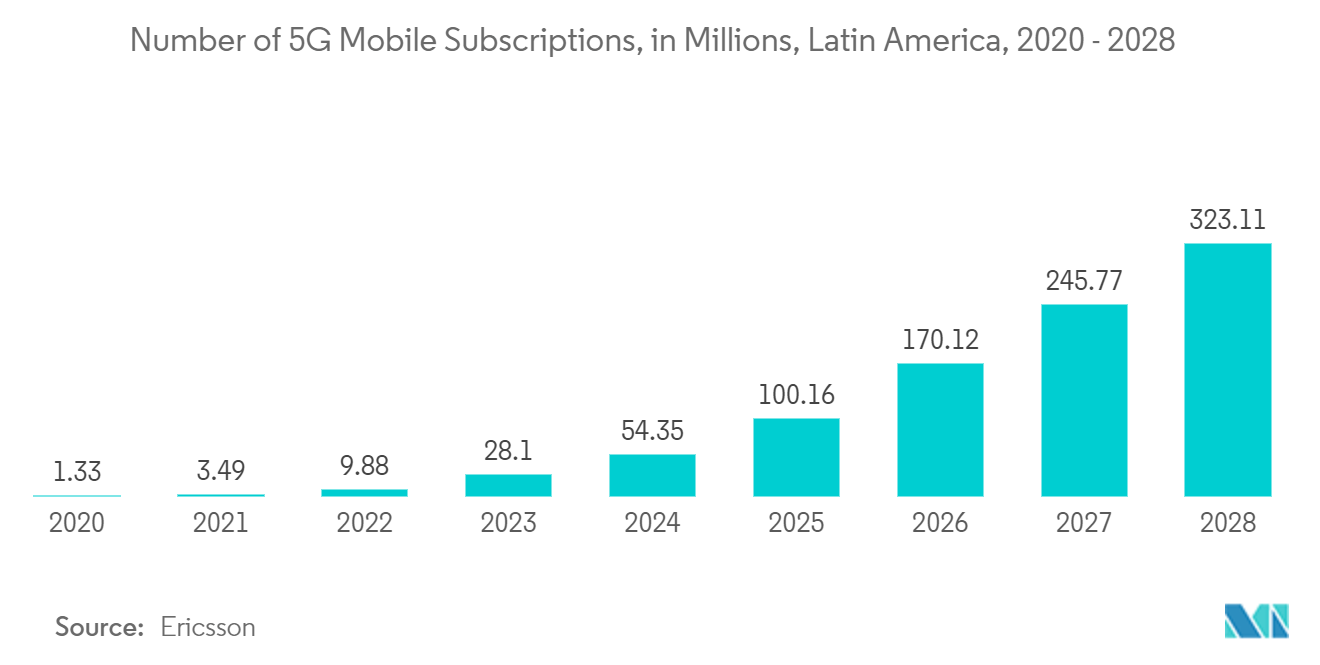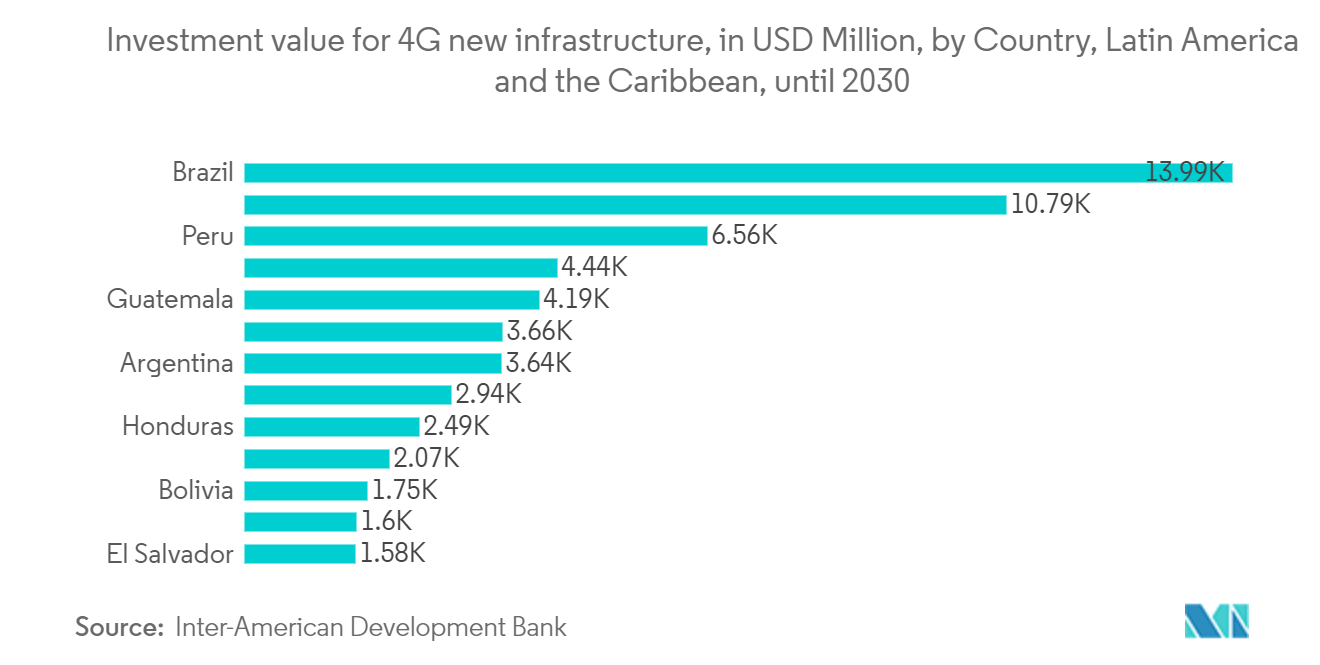Market Trends of Latin America Telecom Tower Industry
5G Deployment is Expected to Drive the Market
- The deployment of 5G technology is significantly transforming the telecommunications landscape in Latin America. As countries in the region prepare to adopt and expand 5G networks, the demand for telecommunication towers is experiencing a substantial boost.
- For instance, Ericsson projects that 5G will account for 44% of Latin America's mobile subscriptions by the end of 2027, with an estimated average monthly smartphone traffic of around 35 GB. This surge in 5G deployment signals a substantial growth opportunity for telecommunication towers in the region.
- Telecom operators are compelled to expand their services in Latin America, owing to the growing demand from the region. For instance, according to GSMA, the monthly consumption of mobile data in Latin America as of 2024 is 11 GB per smartphone. This will quadruple to more than 40 GB by 2028. Apart from this, more than 230 million Latin Americans and 22.8 million Caribbean residents are still offline due to existing gaps in usage and coverage. Therefore, to cater to the increasing internet demand and the increase in penetration, telecommunication vendors are installing new towers and densifying the existing network, ultimately boosting the demand for towers in the region.
- The region is witnessing an increase in investments in the private 5G field as well. Owing to the industrial demand and rising IoT applications, many foreign companies are investing in Latin America. For instance, in October 2023, Jacto, a Brazilian multinational in the machinery sector, chose Nokia to roll out Latin America's inaugural industrial-grade private wireless network, combining 4.9 G/LTE and 5G technologies. This initiative supported Jacto's 5G Smart Factory project in Pompeia, Sao Paulo, Brazil, covering 96,000 square meters. The factory will feature cutting-edge amenities, including an automated painting system, autonomous vehicle management, and advanced storage solutions. Nokia's selection was based on its renowned Modular Private Wireless solution, leveraging 5G NSA technology. Operating on the 700 MHz band for 4.9 G/LTE and the 3.7 GHz band for 5G, this network will ensure pervasive connectivity with high capacity and ultra-low latency, essential for the success of the 5G Smart Factory. Additionally, Nokia will offer installation, configuration, training, and operational support services.
- Similarly, in March 2024, Nestle partnered with Ericsson to roll out a private 5G network in Latin America. This collaboration leveraged Ericsson's Private 5G solution, promising data transfer speeds up to 25 times faster than 4G. The focus lies on bolstering business-critical applications, demanding ultra-fast response times in the millisecond range.

Brazil is Expected to Hold a Major Share of the Market
- Brazil, with its vast geographical expanse and large population, is positioned to be a significant player in the Latin American telecommunication tower market. The country’s economic scale, urbanization trends, and proactive government policies create a conducive environment for substantial growth in telecommunications infrastructure.
- Brazil is the largest country in Latin America, with a population of over 210 million people. The demand for mobile and broadband services is continuously growing, driven by increasing smartphone penetration and the need for high-speed internet connectivity. For instance, according to the 2023 GSMA report for 5G in Latin America, Brazil is expected to have more than 1 million 5G FWA (Fixed Wireless Access) subscribers by 2025.
- The expanding 5G network in Brazil is expected to be a major driving factor for the market’s growth. In March 2024, the National Telecommunications Agency (Anatel), Brazil, greenlit the licensing and activation of 5G technology stations in 395 more municipalities. This expansion elevated the tally of municipalities with 5G coverage to 3,678, encompassing about 181.3 million Brazilians, representing approximately 85% of the nation's population.
- The Brazilian government has been proactive in implementing policies and initiatives to enhance the telecommunications sector. Supportive government policies facilitate faster deployment of telecom towers and attract investments from both domestic and international players. For instance, The National Telecommunications Agency (Anatel) greenlit the licensing and activation of 5G technology stations in 395 more municipalities. This expansion elevated the tally of municipalities with 5G coverage to 3,678, encompassing about 181.3 million Brazilians, representing approximately 85% of the nation's population.
- The Brazilian government is actively working to enhance high-speed internet connectivity in rural Brazil. One of its key initiatives, the ConectaBR program, focuses on bolstering mobile broadband quality and coverage, particularly in favelas (shanty towns) and rural regions. This is achieved through collaborations with or mandates for service providers. The program has a baseline of 100 Mbps download speeds for 5G and 10 Mbps for 4G networks.


